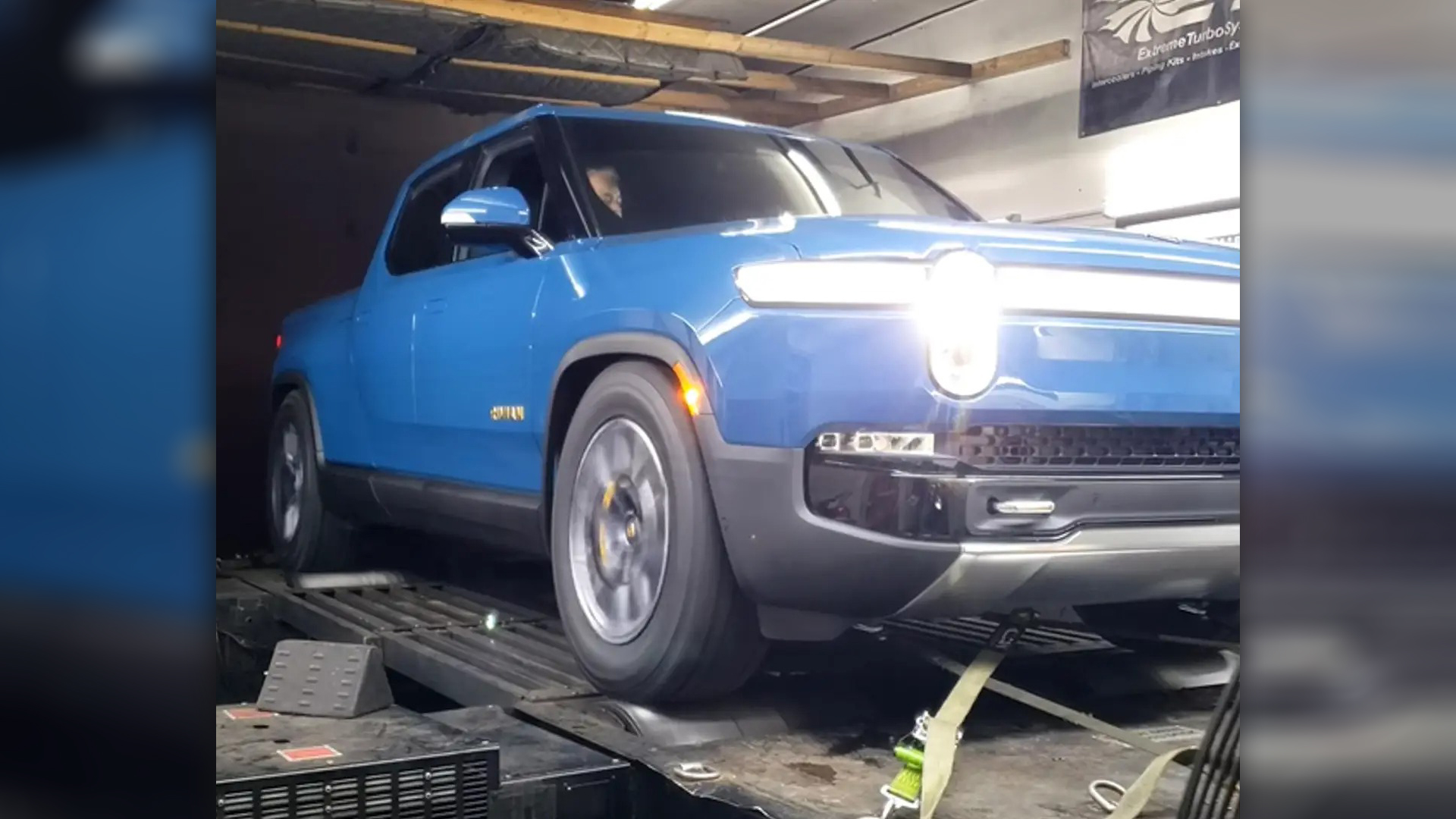

We know Rivian’s top-shelf R1T is wicked quick—we drove it ourselves toward the end of last year. The new automaker claims output figures of 835 horsepower and 908 pound-feet of torque, which is a lot more than the Ford F-150 Lightning and within shouting distance of the GMC Hummer EV. However, people are having a tough time verifying this independently, as one recently posted dyno video shows.
The clip was uploaded to YouTube by a frequent dyno tester named Aaron O’Neil. You can see the Rivian R1T make a brief attempt, though it starts and stops a few times during its 14-second run. It sort of hesitates, with the wheels seemingly slowing down a bit, and then surges again as the front end lifts. It seems as though there are some software gremlins preventing it from going all-out.
O’Neil claims power was unavoidably cut during the test and that the Rivian lacks both a dyno mode and a way to defeat its collision control. Its safety systems are the likely culprit as they surely didn’t appreciate the Rivian accelerating at full-throttle, while stationary, with walls and objects close by. Nevertheless, it was impossible to get a clean dyno run.

O’Neil’s dyno-tested power figures were 526 horsepower and 563 pound-feet—far below the factory’s claims. Rivian has no need to fudge these numbers, of course; it may be struggling with production but no one’s accused them of falsifying key details like that.
Early Tesla models used to run into similar issues before the EV maker released a dyno mode. It’s possible that Rivian could deliver the same thing here, but fortunately, there have been plenty of real-world tests to display just how rapid the pickup really is. Needless to say, these battery-powered trucks are the real deal.
Got a tip or question for the author? Contact them directly: nico.demattia@thedrive.com